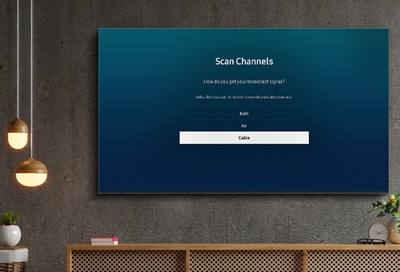The 9-Second Trick For Apollo Group Tv
The 9-Second Trick For Apollo Group Tv
Blog Article
Apollo Group Tv Can Be Fun For Anyone
Table of ContentsHow Apollo Group Tv can Save You Time, Stress, and Money.Apollo Group Tv Can Be Fun For EveryoneSome Ideas on Apollo Group Tv You Should KnowThe Best Strategy To Use For Apollo Group Tv
In this circumstance, as opposed to having three-minute industrial areas throughout a 30-minute tv program, TV shows might transform to one where a customer will certainly be called for to have a regular monthly subscription, so that they cen sight targeted banner advertisements. This sort of marketing currently happens on the net, and the amount of data television business gather allows them to do much the exact same.Discuss the impact of sponsors on program content. Explain the major patterns amongst the broadcasting and wire networks. When tv was in its early stage, producers modeled the new medium on radio. Popular radio shows such as police dramatization Dragnet and western cowboy series Gunsmoke were adapted for tv, and brand-new TV programs were funded by single marketers, equally as radio shows had actually been.
Today, the television industry is much extra intricate. Programs are sponsored by several advertisers; programming is managed by significant media conglomerates; and the three significant networks no more dominate the airwaves yet instead share their audiences with numerous wire channels. Several variables account for these trends within the market, including technical growths, government policies, and the production of brand-new networks.

Apollo Group Tv for Beginners
Established in 1969, (PBS) created out of a record by the Carnegie Payment on Educational Tv, which took a look at the role of educational, noncommercial television on culture. Public television was additionally planned to supply universal access to television for viewers in country locations or customers who could not pay for to pay for private tv solutions.
The duration in between 1950 and 1970 is traditionally acknowledged as the. Apart from a small part of airtime regulated by public tv, the three significant networks (understood as the Big 3) dominated the television market, jointly making up greater than 95 percent of prime-time viewing. In 1986, Rupert Murdoch, the head of international company News Corp, introduced the Fox network, challenging the supremacy of the Big 3.
Targeting young and minority audiences with shows such as Buffy the Vampire Killer, Moesha, Dawson's Creek, and The Wayans Bros., the new networks wished to draw stations far from their old network affiliations. However, instead than duplicating the success of Fox, UPN and WB battled to make an influence. Incapable to bring in numerous affiliate stations, the two fledgling networks reached less households than their larger opponents since they were unobtainable in some smaller cities.
This decision led the way for the development of cable film networks, adding to the rapid growth of cable television in the 1980s and 1990s. apollo group tv. Additional deregulation of cord in the 1984 Cable Television Communications Policy Act removed restrictions on cord rates, enabling drivers to charge what they wanted for cable services as long as there worked competitors to the service (a requirement that over 90 percent of all cable markets could meet)
Everything about Apollo Group Tv

Having actually developed the very first "superstation," Turner increased his realm by establishing 24-hour news network CNN in 1980. At the end of the year, 28 nationwide programming services were offered, and the cord transformation had actually begun. Over the following years, the industry went through a period of fast growth and appeal, and by 1994 visitors can select from 94 fundamental and 20 costs wire services.
Figure 9 - https://penzu.com/p/0fe6ed86976b3399.16 Increased competitors from cable networks has created a consistent decline in the networks' target market scores. Throughout the 1950s, the expense of generating a solitary tv show boosted as shows came to be longer and manufacturing prices skyrocketed. Sponsorship on network television changed from single sponsorship, in which a program was completely supported and created by one marketer, to numerous sponsorship, in which marketers acquired 1- or 2-minute places on the program
Choose one of the Big Four networks and print out its once a week programs schedule. See the network's prime-time programs over the program of a week, noting the target market for each show.
What Does Apollo Group Tv Do?

Linear TV, often described as conventional program television, encompasses cord and satellite tv. It's called "direct" since content follows a predetermined shows routine, unlike on-demand content which the individual customer chooses to see based on their very own preferences and schedule. When you ask, "What is linear Television?", consider it as the classic method of viewing television that has been around for years.
Report this page